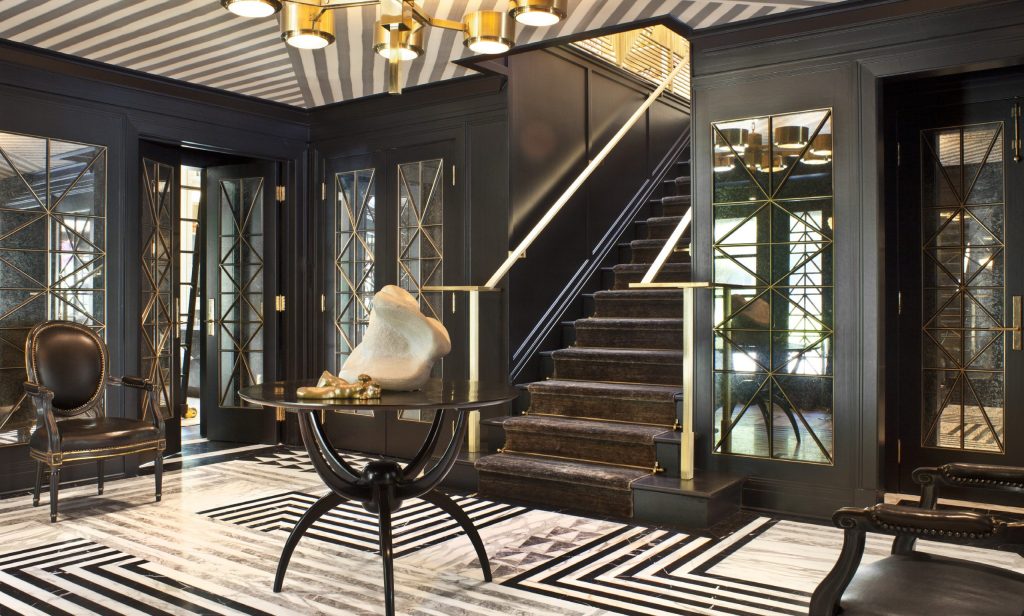
Art deco interior design is a style that transcends generations, embodying a unique blend of elegance and sophistication. It’s more than just a trend; it’s a timeless aesthetic that continues to inspire designers and homeowners alike. This style offers a sophisticated and glamorous atmosphere, but it can sometimes feel overwhelming for those unfamiliar with its characteristics and nuances. This thorough guide will help you understand the key elements, common challenges, and the optimal approaches to incorporating Art Deco elements into your home, creating a space that embodies timeless elegance and luxurious character. This guide explores the historical background of art deco design, highlights key design principles, offers specific design tips, and explores real-world applications. We’ll delve into lighting choices, furniture selections, and color schemes, offering a practical approach to bring this spectacular style to life.
Understanding the Art Deco Aesthetic
Historical Context
Art Deco, flourishing in the 1920s and 1930s, emerged as a reaction to the ornate styles of the past. Inspired by the glamour of the Jazz Age and the burgeoning Art Nouveau movement, it embraced geometric shapes, streamlined lines, and rich materials. This distinctive style quickly captured the imagination of designers and architects. The movement’s influences drew heavily from various forms of art, including modern architecture and fine arts of that time. This era saw a significant shift in design, moving away from the complexities of Victorian and Edwardian aesthetics to something more sleek and modern.
Key Design Principles
The underlying philosophy of art deco is to create a sense of luxury and sophistication through carefully chosen elements. Its design philosophy is built on strong geometric patterns, bold colors, and lavish use of materials. Art deco is characterized by its use of rich materials such as lacquer, polished wood, leather, chrome, and glass. The emphasis on functionality and elegance is deeply rooted in the art deco ethos.
Implementing Art Deco Elements in Your Home
Choosing Furniture
Art Deco furniture is instantly recognizable with its geometric shapes, curves, and streamlined forms. Look for pieces with clean lines, sculpted details, and vibrant colors. A beautiful example of this is a high-back Chesterfield sofa with geometric cutouts and vibrant emerald green upholstery. If you have a smaller space consider adding a few key pieces like a sleek cocktail table, a geometrically patterned chaise lounge or a glamorous end table.
Lighting Design
Illuminating the Space
Lighting is key to creating the desired atmosphere. Art Deco lighting often attributes intricate geometric designs, use of materials like glass and brass. Think bold pendant lights with striking shapes. For example, a chandelier with geometric cutouts and crystal accents can dramatically enhance a dining area, creating a warm and welcoming ambiance. Avoid light fixtures that are too delicate or lack a bold aesthetic. Experiment with lighting placements and combinations to tailor the illumination to the desired effect.
Related Post : How To Start Interior Design
Color Palettes for Art Deco Spaces
Creating a Harmonious Look
Bold and contrasting color palettes are essential to art deco. Rich jewel tones like emerald green, sapphire blue, ruby red, and gold accents are common attributes in the design. These colors, often used in combination, add warmth and vibrancy to the space. Consider a combination of deep teal and gold for a luxurious and engaging space, or create a contrast by mixing gold and black. An example of this approach is a living room featuring emerald green velvet sofas paired with gold accents and black geometric patterned rugs.
Decorating Details
Enhancing the Look
Art deco interiors often attribute decorative details such as intricate metalwork, geometric patterns, and luxurious materials. Incorporating mirrors with elaborate frames and bold patterns into the design can create a glamorous, reflective ambiance. Consider using patterns like stripes, chevron, or zigzags in fabrics and wall décor. Think of a wall with a striking geometric patterned wallpaper or use of metallic accents on decorative objects, like vases or candle holders.
FAQs
What are some common challenges in implementing Art Deco interior design?
One common challenge in implementing art deco interior design is maintaining the balance between classic design principles and modern necessities. Another challenge is finding authentic or well-recreated art deco pieces that align with your budget. Consider if you need to make adjustments to your current layout to maximize the optimal aesthetic appeal. With proper study and planning, however, these challenges can be easily overcome. Look into how other spaces have used the style for inspiration or consult with a design professional.
How can I adapt Art Deco design for a modern home?
Adapting art deco for a modern home involves blending the classic aesthetic with contemporary elements. Incorporate sleek modern furniture pieces with the art deco designs. Incorporate modern lighting fixtures with geometric shapes. Using contemporary materials alongside the traditional materials like glass or brass can also make art deco designs work with a modern space.
In conclusion, art deco interior design offers a timeless and sophisticated aesthetic that can transform any space. By embracing its key elements, you can create a vibrant and engaging environment that reflects your personal style. The modern interpretations of art deco offer a versatile approach to blending the past and present. If you’re looking to elevate your home’s design and create a space that embodies timeless elegance, consider incorporating art deco principles. Start by exploring the various design options available and consider seeking professional advice to ensure the optimal outcomes. Remember, the possibilities are endless with art deco interior design!.